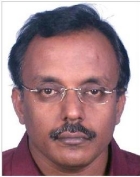
Prof. Qihua Tan
University of Southern Denmark, Denmark
Dr. Qihua Tan is a professor of genetic epidemiology at Institute of Public Health and Institute of Clinical Research, University of Southern Denmark. Professor Tan’s research area involves twin modelling, bioinformatics, genetics, epigenetics, biodemography as well as their applications in public health with a focus on human aging and development and in clinical medicine such as cancer, diabetes, asthma etc. He has also established a strong network of international collaboration on twin analysis, genetic and epigenetic studies on aging and metabolic health. Professor Tan has published over 250 articles in internationally peer reviewed journals among which about half as first author or last (corresponding) authors.
Speech Title: "Exploratory analysis of the epigenetic heterogeneity in polycystic ovary syndrome (PCOS)"
Abstract: Polycystic ovary syndrome is the most common endocrine disorder in women of reproductive age. PCOS is a clinically heterogeneous condition. Distinct subtypes may exist with varying clinical and biochemical features which impact clinical management of PCOS. Identifying sub-clusters of PCOS women is a critical and challenging issue toward individualized treatment. Using data on the DNA methylome of PCOS 54 patients and 59 healthy controls, we performed an epigenome-wide association study (EWAS) on DNA methylation variability and identified one site CpG site with genome-wide significance (p=2.11e-8, FDR=0.018) on chromosome 17 (74837957bp), 76 sites with suggestive significance (p<1e-5), displaying higher variability in PCOS patients than in healthy controls. Replication analysis using an independent cohort showed a highly rate of 38.6% overlap of genes harboring the variable sites (hypergeometric p<5.11e-3). The EWAS results were highly enriched for linoleic acid metabolism and bile secretion in the KEGG biological pathways. Based on the top 138 more variable site in PCOS patients, we were able to cluster the 54 patients into two big clusters, each with two subclusters. Comparison of the observed clinical variables showed that the two big clusters are highly significantly different in blood pressure (p=9.28e-3 for SBP, p=1.22e-3 for DBP). Our results showed that variability in the DNA methylome of PCOS patients can be used as valuable molecular biomarkers for exploring the epigenetic basis in PCOS heterogeneity with aim for individualized treatment and management.

Assoc. Prof. Ravindran Chandran
Tamil Nadu
Agricultural University, India
Dr. Ravindran Chandran is an Associate Professor and Head of Horticultural Research Station, Tamil Nadu Agricultural University, Kodaikanal. Dr.Ravindran research area involves fruit science, bio diversity conservation, underutilized plant species, waste utilization and value addition of horticultural crops as well as applications in public health with a focus on nutritional security and green horticulture etc. He has also established a strong network of International collaboration with ISHS, FAO-Hortivar, ASHS and Indian Pomological Society (Society for nutritional security) at Horticultural College and Research Institute, TNAU, Periyakulam, Tamil Nadu, India. Professor Ravindran has published over 50 articles, 12 books and 20 Book chapters with ISBN in internationally and nationally peer in reviewed journals.
Speech Title: "Green Horticulture: A Way for Protecting Farmers and Environment"
Abstract: Global warming and pollution is the biggest menace for the survival of the biological species and it by reducing our carbon footprint and protect our environment. Earth was a beautiful landscape but man has ruthlessly exploited for his greed specially, in the last century. With rapid industrialization and random urbanization environmental pollution has become a serious problem. India is second largest producer of fruits and vegetables in the world and Constituting 18% of the area and contributes about 33% of the gross value to the agricultural GDP. Horticultural plants species to reduce pollution is crucial because plants play a vital role in environmental sustainability. Some species of horticultural importance have evergreen, large leaved, stickier leaves, rough bark, ecologically compatible, require minimum care, low water requirement, habit, pollution tolerance and dust scavenging capacity. They can absorb pollutants, release oxygen, and contribute to overall air and water quality. Exploring and promoting plant-based solutions can offer sustainable and natural ways to mitigate pollution, addressing environmental challenges and promoting a healthier planet. So in addition to reducing, reusing and recycling, we can actively make a difference by planting trees. Read on to discover how planting trees can make an enormous, positive contribution to the health of our environment. After the harvest of fruits, huge quantity of waste biomass from Pseudo stem, leaves and suckers were generated which are dumped on roadside or burnt or left in situ causing detrimental impact on environment. The fiber extracted from banana pseudo stem appears to be good scope of profitable use in textile and paper industries on commercial scale.

Prof. Sushant Singh
Sharda University, India
Dr. Sushant Singh is working as Professor at Department of Life Sciences at Sharda School of Basic Sciences and Research, Sharda University. Dr. Singh completed his PhD in Biotechnology from IIT Guwahati in July 2014. His postdoctoral experience includes working at University of Central Florida, Ohio State University and at SBP Medical Discovery Institute, USA. Dr. Singh holds 12 patents (1 International, 11 National) and has published over 50 research articles in peer-reviewed international journals. Additionally, he has presented at over 50 International and national conferences. He is an active reviewer for several journals in Biotechnology, Nanotechnology, and the Life Sciences. Dr. Singh has received current funding approval for two research projects as Principal Investigator: 1. DST SERB Startup Research Grant with funding of 30.5 Lakhs. 2. MSME Idea Grant for Prototype Development with funding of 12 Lakhs. Beyond his research, Dr. Singh is a Member of the Innovation Ambassador at the Ministry of Education's Innovation Cell (MIC), Govt. of India and is actively involved in entrepreneurial related activities.
Speech Title: "Advances of Cerium Oxide Nanomaterials in Diagnostic, Therapeutics & Biomedical Research"
Abstract: Cerium oxide nanomaterials has gained immense attention for numerous biomedical applications majorly due to its antioxidative capabilities. The nanoparticle form of cerium oxide can induce the cellular proliferation and its survival by reactive oxygen species regulation and maintaining the cellular oxidative stress environment. Cerium oxide nanoparticle functional capabilities depend upon the Ce+3/Ce+4 surface redox state. This exists of dual state of redox nature is due to the generation or annihilation of oxygen vacancies in the ultra-fine cerium oxide lattice structure. The dual oxidation stage nanoceria acts as catalytic hotspots for redox reactions and reduces reactive oxygen and reactive nitrogen species. Cerium oxide nanoparticle interacts with cellular surfaces at the nanointerface with focus in energy dependent and independent cellular processes. Cerium oxide nanoparticle antioxidative properties also helps in the upregulation of a faster diabetic wound healing process. Further cerium oxide nanomaterials thin films have been developed using the Atomic Layer Deposition technique for potential application as anti-inflammatory coatings and multiple sensors platforms. Concluding, the cerium oxide nanoparticle had emerged as effective and fascinating material for bio-nanotechnology based future applications.

Assoc. Prof. Murugappan Ramanathan
Thiagarajar College, India
Dr. Murugappan Ramanathan is the Head and Associate Professor, Department of Zoology, Thiagarajar College, Madurai, TN, India. He is the Dean of Academic Affairs of the Institution. He received his doctoral degree from Madurai Kamaraj University in the year 2005. Dr. Murugappan Ramanathan had received INSA visiting Scientist Fellowship for bilateral exchange programe.to visit The James Hutton Institute, Scotland, 2016. Recipient of DBT Overseas Associateship award sponsored by DBT, India and underwent training for a period of 6 months at, National University of Singapore (NUS) in the year 2007. He also received, Tamil Nadu state government sponsored TNSCST Young Scientist Fellowship in the year 2002. Dr. Murugappan Ramanathan had completed four major and two minor research projects sponsored by DST, MoEF, MoES, UGC.Organized two national level workshops, one on Molecular informatics and Drug Designing funded by UGC and CSIR in the year 2012; another one in the year on 2019 on Molecular and Computational Biology Techniques .Authored 5 book chapters and have two patents. Organized more than 40 state level students’ seminars. Under his guidance 11 students have got their doctoral degree. His area of specialization is screening of secondary metabolites produced by microbes, utilization of bio nanoparticles in the control of pests and pathogens.
Speech Title: "Fabrication, Characterization and Insecticidal Activity of Cashew Nut Shell Liquid (CNSL) Nano Formulations Against the Dengue Vector Aedes Aegypti"
Abstract: Insect pests are omnipresent and found almost in every conceivable habitat. Among the various insect pests, mosquitoes (Diptera: Culicidae) are notorious not only for their biting nuisance but they act as vectors for various epidemic arboviral diseases. Incredibly, of the different mosquitoes species, Aedes aegypti is responsible for the transmission of several diseases including malaria, dengue, and chikungunya. According to World Health Organization (WHO) approximately, 4 billion people (approximately 40-50% of the world's population) are at risk of dengue infection and India alone contributes to 34% of the global threat of dengue. Mosquito control with special reference to Aedegenus is facing challenges, due to its high ecological plasticity. Mosquito control methods in practice mainly rely on synthetic insecticides. Indiscriminate use of insecticides adversely affects human beings. Therefore, it is necessary to explore economically feasible, readily accessible, environment friendly, and target specific means of mosquito control strategy. Anacardium occidentale (Anacardiaceae) known as cashew tree, is extensively cultivated all over the world for its nutrient rich nuts. The outer shell rich in bioactive compounds constitutes left unutilized and discarded. In this study, it is intended to study the toxicity of the liquid extracted from the cashew nut shell (CNSL) against the fourth instar larvae A.aegypti. The results illustrate that apart from the potent insecticidal activity, CNSL exhibits poor water solubility. Therefore, it is also intended to formulate a CNSL based nano emulsion that can enhance bio efficacy at lower doses. A dose dependent repellence efficiency and mortality of A.aegypti was observed on treatment with CNSL nano emulsion.
